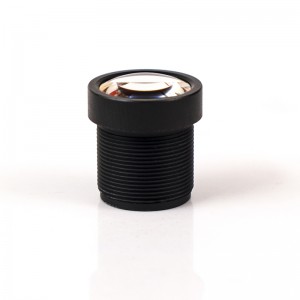MJOPTC Fixed focal 2.8mm MJ880810 HD Industrial camera lens
Industrial camera lens field
|
Serial number |
Item |
Value |
|
1 |
EFL |
2.8 |
|
2 |
F/NO. |
2.4 |
|
3 |
FOV |
170° |
|
4 |
TTL |
16.2 |
|
5 |
Sensor Size |
1/3” 1/2.9” |
Industrial cameras are divided into analog cameras and digital cameras according to the output image signal format.
Early industrial cameras mostly used standard analog output such as PAL/ NTSC/ CCIR/ EIA-170, and some products used non-standard analog output. With the development and popularization of digital interface technology, more and more industrial digital cameras replace traditional analog cameras in various machine vision systems. Furthermore,the digital camera's signal is less disturbed by noise, so the dynamic range of the digital camera is high and the image quality is better.

Large target surface 8 Mega pixels wide-angle industrial surveillance lens, broadband antireflection coating, improve light transmission performance, 3 million pixel high-precision imaging, high resolution, large depth of field, compact size, small size, good shock resistance.
Requirements for the lens of industrial camera machine vision:
Different industries have different choices for machine vision lenses. Machine vision adds a new visual dimension to industrial control systems, it can provide the size, position and orientation of parts on the assembly line, and the right lens selection is very important for machine vision to play its due role, so, more of robot manufacturers choose to conduct in-depth cooperation with lens manufacturers. MJOPTC can customize, research & develop related vision lenses or provide OEM/ODM cooperation according to customer needs.
Machine vision is playing an increasingly important role in controlling industrial processes, especially in areas such as robot guidance, object recognition, and quality assurance. The current state of the art vision systems go beyond those basic functions, such as identifying parts and orienting them, to provide information for subsequent functions, such as moving objects from one location to another. For example in automobile production and inspection lines, conveyor belts are often used as a reference. Here, the robot performs two tasks: recognition and teleportation.
Optical control is very important in most machine vision applications. Robot vision systems also require extremely high repeatability, so it is necessary to reduce jitter to provide clear images. At this time, the high-definition visual lens with high reliability plays a decisive role.












